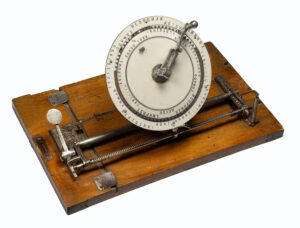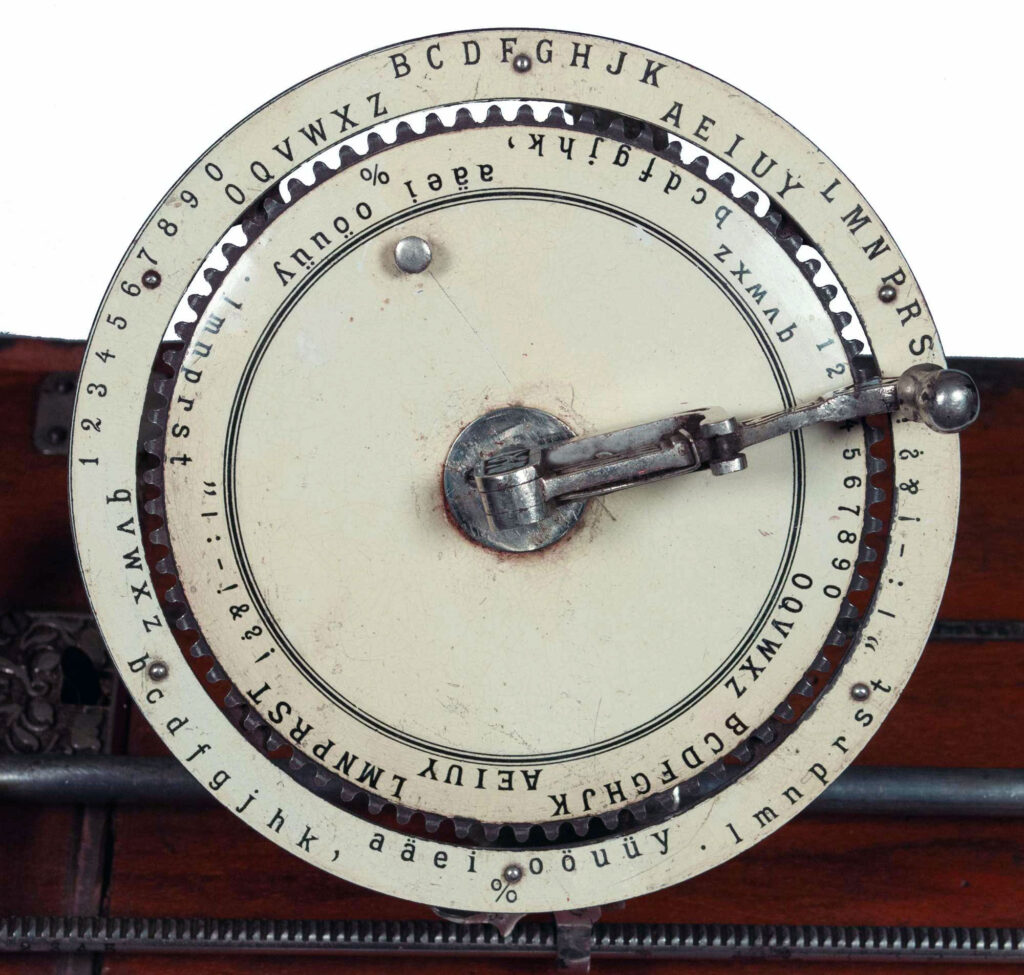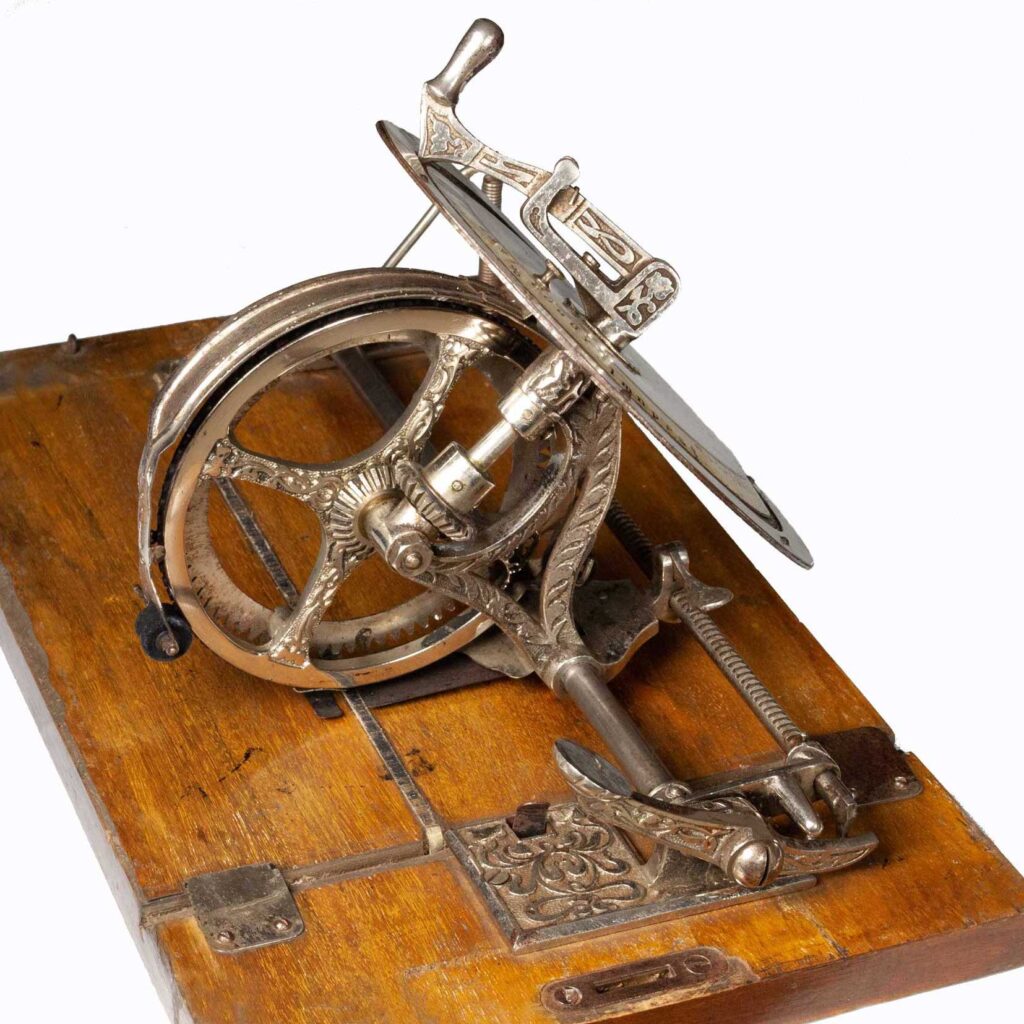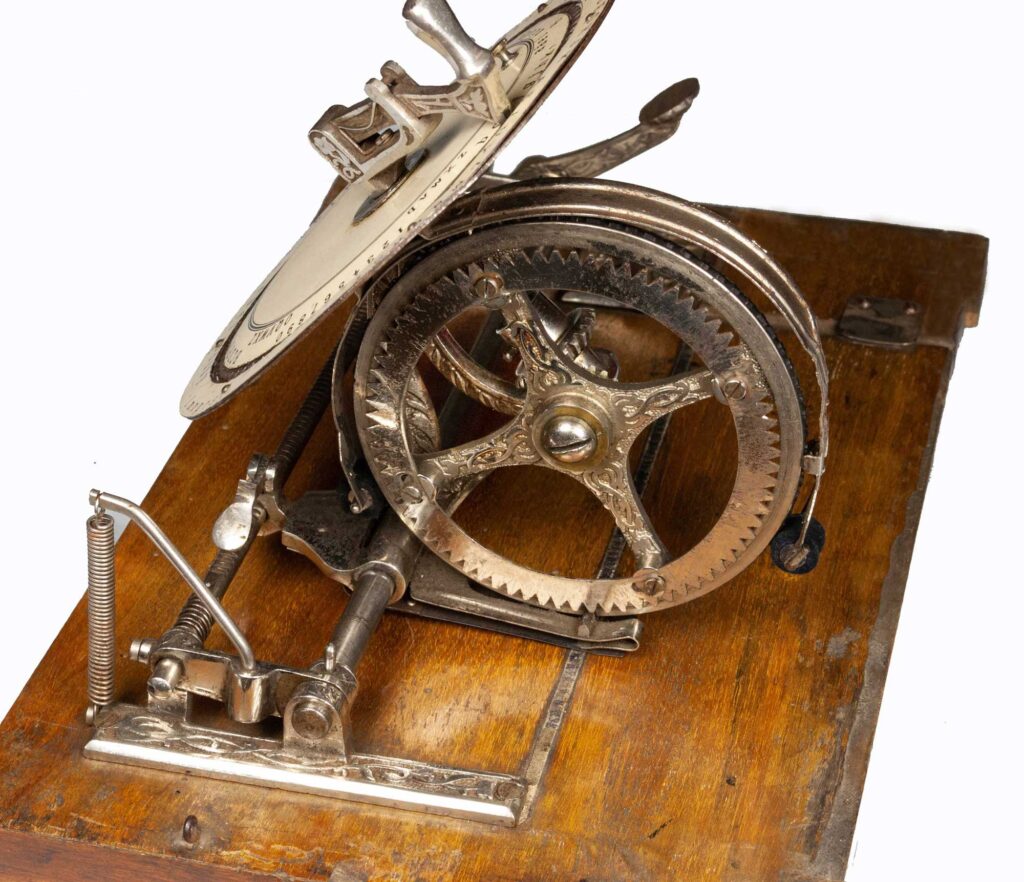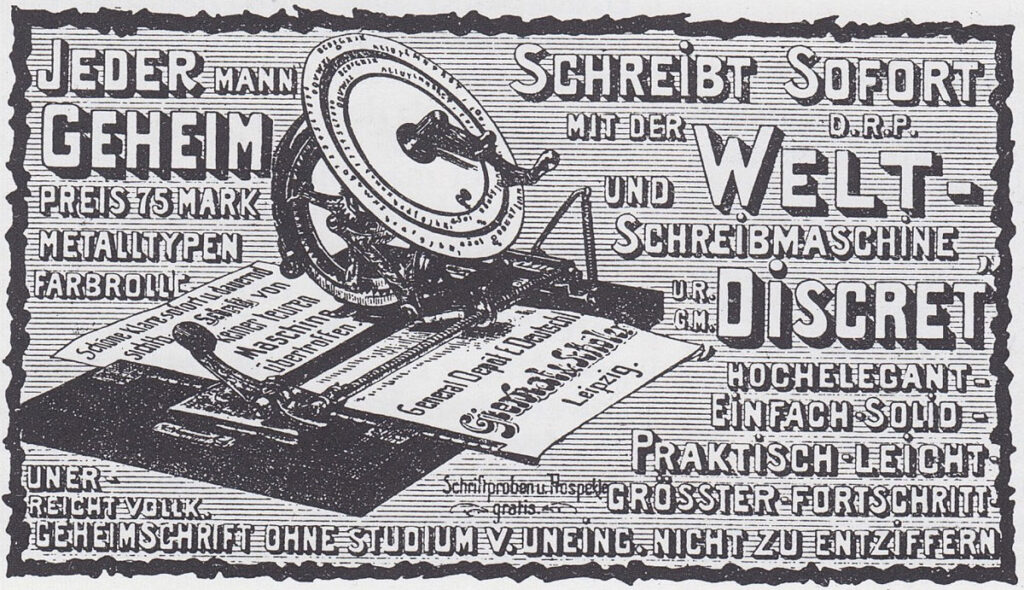The Diskret is a beautifully designed index typewriter with a special ability: it could send a coded or ciphered message in addition to functioning as a regular typewriter.
Here is a description from the 1899 patent explaining how it operated as a cipher machine: “The present invention relates to type-writing machines which can be used for code or secret writing. The invention consists in the arrangement horizontally of two concentric rings, one within the other, each being provided on its surface with letters and signs, which rings can be relatively displaced one with regard to the other according to a prearranged code or system.”
To send a coded message, both sender and receiver would offset the inner index on their Diskret machines by the same amount, rotating it against the stationary outer index. The operator would then type using the inner index, thereby scrambling the message as the characters from the outer index were printed. To decipher the message, the recipient would look at each character of the coded text on the outer index, then find the corresponding paired character on the inner index. The uncoded message could not be typed out directly but could be written separately on paper.
To type, one simply selects characters using the rotatable central handle, then presses the lever on the left-hand side of the wooden base. This causes the carriage assembly, with its vertical typewheel, to descend and print onto the paper. Inking is achieved using two ink rollers.
The Diskret is lavishly adorned with cast Art Nouveau motifs. In Germany, the Art Nouveau movement was known as Jugendstil (“youth style”) and was characterized by floral ornaments and flowing lines. Members of the movement reacted against the neo-classicism of official art and architecture, aiming instead to integrate art into everyday life by creating beautiful, functional objects. With its Jugendstil embellishments, the Diskret is elevated to an exceptional object of function and art.
Production and serial numbers: The Volkschreibmaschine (Peoples typewriter) of 1888 was the predecessor of the Diskret and was produced in Karlsruhe, Germany along with the first Diskets. The Volkschreibmaschine only had one index and was not able to create a cyphered message. It seems that the serial numbers for these two typewriters ran consecutively and then started again when production moved to Berlin and then Leipzig with the firm Giernat & Schroter. The Diskrets made in Berlin and Leipzig have an impressive decal on the index plate while the earlier Karlsruhe Diskrets did not.
